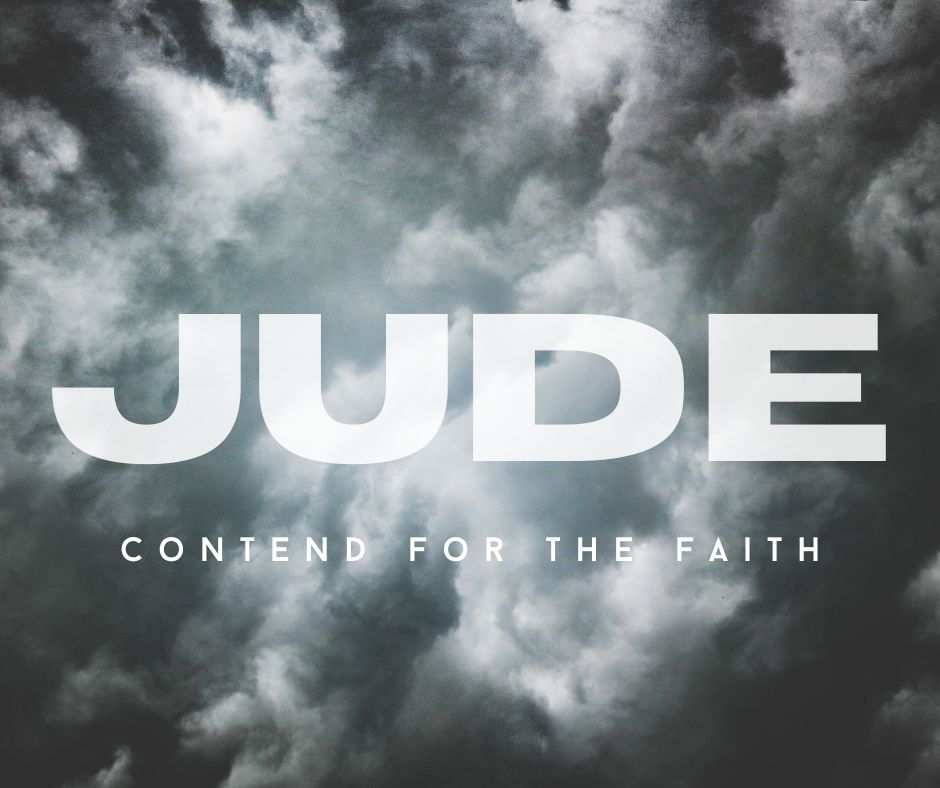The many and the few
Mark 3:7-19
The previous verse spoke of the plot to have Jesus destroyed. For Mark, the movement of a place is often the movement of the narrative. Jesus has shown his authority in his teaching and his healing. The conflict has arisen in the Pharisees, and now Mark shows us some other groups and how they respond to Jesus. Just as the pharisee’s respond to Jesus differently than his disciples, the crowd also follows Christ and has different reactions. As Mark explains the Gospel, he asks the question, who do you say that Jesus is? Who do the disciples, Pharisees, and the crowd say that he is? Jesus withdrew with his disciples away from the Pharisees, and they go to the sea. However, as they withdraw, a great crowd followed Jesus. We need to note that the crowd, although a group of people, is used in Mark as a character.
I. Healings of Jesus (7-10)
The crowd follows Jesus in the same sense that the disciples follow Jesus; however, they only follow him to be healed. The crowd gets bigger and bigger and several times. Mark points out that the crowd came from Galilee, and then from other towns, but now he writes how the crowd has come from everywhere: Galilee, Judea, Jerusalem, Idumea, Tyre, and Sidon. They came from the north, south, east and west. Mark explains that people from other Nations came, gentiles. This crowd begins to increase, and Jesus tells his disciples to get the boat ready because the crowd might crush him. The reason they might crush him is everyone wanted to touch him. The crowd does not follow Jesus for his teaching but only his healing. They heard what he was ‘doing,’ not what he was saying. They only wanted a physician, not a teacher.
II. Secrecy of Jesus (11-12)
Previously, he told the unclean spirits not to tell anyone about him (Mark 1:25, 34) and the man with leprosy (Mark 1:40-45). Mark again records that Jesus tells the unclean Spirits to be quiet. Before we speak about what is called the Messianic Secret, let us understand that twice the unclean spirits have explained that Jesus is the “Holy One of God” (Mark 1:24) and “The Son of God” (Mark 3:11) because they know him (Mark 1:34). Besides the Father after Jesus’ baptism, the unclean Spirits are the only ones who have correctly answered the question, “Who do you say Jesus is?” The Pharisees believe he is a blasphemer.
Back to the Messianic Secret, simply the theory put forward by some scholars is that he frequently tells people to remain silent about who he is. Their theory explains that Jesus never claimed to be the Messiah, but people wrongly identified him as the Messiah, and therefore he was correcting them when they misspoke. They claim that Jesus had no conscience thought of being the Messiah, but the early church added this. We do not have the time to refute this in detail, but simply they assume that Jesus commanding and rebuking people is Jesus’ correction. However, Jesus does not rebuke them and say that is not true but tells them to be silent. I believe there is a greater reason why Jesus explains to everyone to remain silent. That is, many of the Jews misunderstood what must happen to the Messiah. The first promise of the Messiah is found in Genesis 3:15, “I [God] will put enmity between you [the serpent] and the woman, and between your offspring and her offspring; he shall bruise your head, and you shall bruise his heel.” However, many Jews were looking for the snake crusher, the one who would bruise the serpent’s head. They were looking for a king to come and overthrow the Roman empire. However, Christ fulfills his role as a mediator first by humiliation then exaltation. He must first suffer. His heel must first be bruised.
We also need to understand that this could be one of the important treads in the Gospel of Mark. Jesus continually instructs them not to tell anyone, yet after his resurrection, the women go to the tomb to anoint Jesus. But when they get there, the stone is rolled away, and a young man dressed in white tells them, “Go tell the disciples.” The following verse says, “And they went out and fled from the tomb, for trembling and astonishment had seized them, and they said nothing to anyone, for they were afraid” (Mark 16:8). They are finally told to tell others about Jesus, and they are silent.
III. Disciples of Jesus (13-19)
As Jesus did before, following the chaos and the crowds, Jesus withdraws, not alone but with his disciples. Jesus goes to the top of the mountain and calls the twelve disciples. Christ appoints 12 men, five of whom we have met previously in the Gospel of Mark. We will look at three things that Christ calls them to do, but before we look at these tasks, let us look at two brief notes. Firstly, Christ appointed twelve. The Greek said he ‘made’ twelve. Christ creates the office of Apostle; we see this as an office which Christ ordains and calls people to. They are appointed by Christ and also witnessed the resurrected Christ. Paul is called an apostle because he is appointed by Christ (Gal 1:1) and also has seen the resurrected body of Christ (1 Cor 9:1).
Secondly, the misfits make up the twelve. We are not given details about all of them, but we notice that they have different professions, fishermen and tax collectors. Peter explains in Acts 10 that he is a good Jew that has never eaten any unclean animal. Within the twelve, we have different political positions. Levi (Matthew), the tax collector, was working for the Roman Empire. But Simon the Zealot most likely means he was a member of an ancient Jewish sect aimed at a world Jewish theocracy and resisted the Romans. An extremist who opposed Roman rule. But most importantly, within the twelve, we know of one goat. Judas, we are told, will betray Jesus. Let us now look at what these twelve men are called to do.
a) Proximity to Christ
A disciple is one who follows; literally, the word means ‘learner.’ The text explains that Jesus appointed them “so that they might be with him.” They are called to follow and to learn. When I left high school, I began an apprenticeship as a carpenter. This apprenticeship was four years of ‘following’ a master carpenter to learn the craft. Over the four years, I would watch how to do something. Then I would do it; often, my ‘master’ would correct my technique or instruct me in a better way or tell me to do it again. Over the four years, I became more competent until I became a ‘master’ craftsman. Jesus calls his disciples to follow him, not from a distance but to be with him. The mark of a disciple truly comes down to your proximity to your master. One cannot be an apprentice virtually. He calls the twelve that they might be with him. The purpose of being with Christ is to be then sent by Christ. One commentator says it beautifully, “Discipleship is a relationship before it is a task, a “who” before a “what.” We are called to be close to Jesus. Discipleship first starts with the proximity to Christ. We do not mean merely in inches and feet because the crowd pressed up against him, but to follow and learn as an eager apprentice who desires to learn everything from their master.
b) Preaching about Christ
The Disciples are then sent out to preach. As the saying goes, like father like son, the saying could be like teacher like a student, or like Lord like a disciple. Christ’s ministry is one of the proclamation of the coming of the Kingdom, “repent and believe in the gospel” (Mark 1:14-15). The disciple is sent to be able to proclaim the Gospel of Christ. We often think or treat the Gospel as a child treats a bag of candy. The more I give away or share, the less I have or, the less there is to go around. However, the Gospel does not expire. The Gospel does not diminish. There are many rooms in the place Christ prepares for us. Christ calls all his followers to tell others what he has done for them, but he specially calls ministers of the Gospel to labor in preaching and teaching. The minister does not preach his Gospel, but he preaches the same Gospel as Christ preached “repent and believe the Gospel.” Paul asks a series of questions in Romans 10:14-15 showing the importance of preaching.
“How then will they call on him in whom they have not believed? And how are they to believe in him of whom they have never heard? And how are they to hear without someone preaching? And how are they to preach unless they are sent?”
Paul then explains in verse 17, “So faith comes from hearing, and hearing through the word of Christ.” We use a simple formula at Seven Springs Presbyterian Church, “We preach Christ crucified” (1 Cor 1:23). The preaching of Christ is central in our church, not because we don’t have a high budget for fancy programs or not because we don’t have a dynamic leader to be able to implement new methods. We preach Christ because faith comes by hearing.
c) Power of Christ
Just as Christ preached with authority, he also cast out demons by authority. This, we have explained, is the sign of his authority. Often, the Prophets in the Old Testament would speak the word of God, and the sign would accompany the preaching as a testimony of the Word of God. The Disciples were given authority by Christ to be able to cast out demons. We notice this in the Book of Acts when the apostles perform signs and wonders as a testimony of the preaching of the Gospel. However, as the book of Acts progresses, the signs and miracles diminish, but the preaching of the word continues and grows.
Conclusion
The divisions are starting to become apparent in the Gospel of Mark, you have the Pharisees who want Jesus Destroyed (Mark 3:6), you have the crowd who want Jesus to heal them, and lastly, you have the disciples who have not said a word up to this point. Yet, they are appointed by Christ to be close to him, to learn. They are then sent out to preach the Gospel and cast out demons. However, up to this point in Mark only the unclean spirits (and God the Father) have rightly identified Christ as the promised Messiah, the Son of God. Many people follow him. Some others follow him to find a reason to accuse him, follow him for benefits, and others to be his disciples. People come from various places to see him and backgrounds. However, the question remains, who do you say Jesus is? Are you the person who wants him destroyed? Do you only seek his benefits? Is he your Lord?





